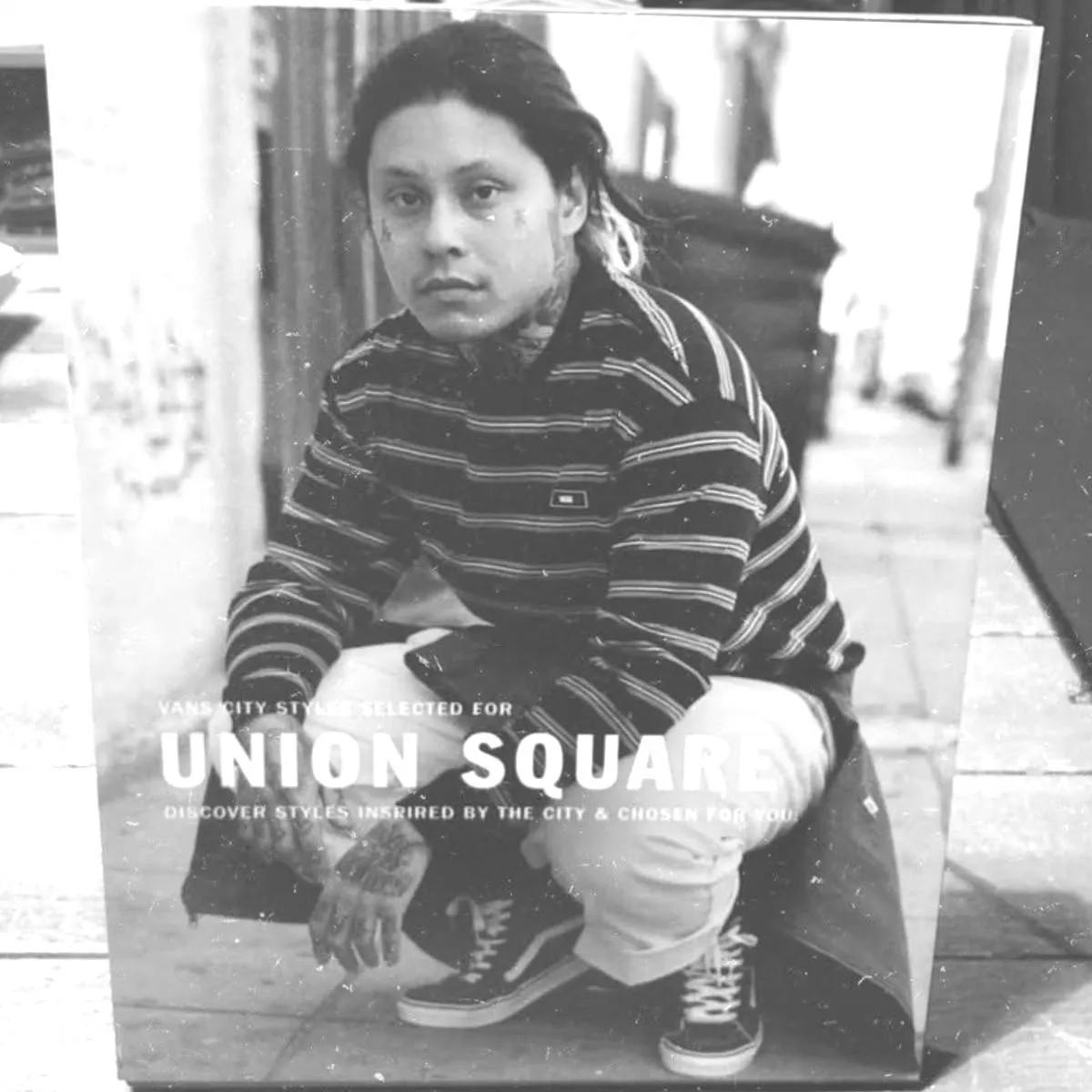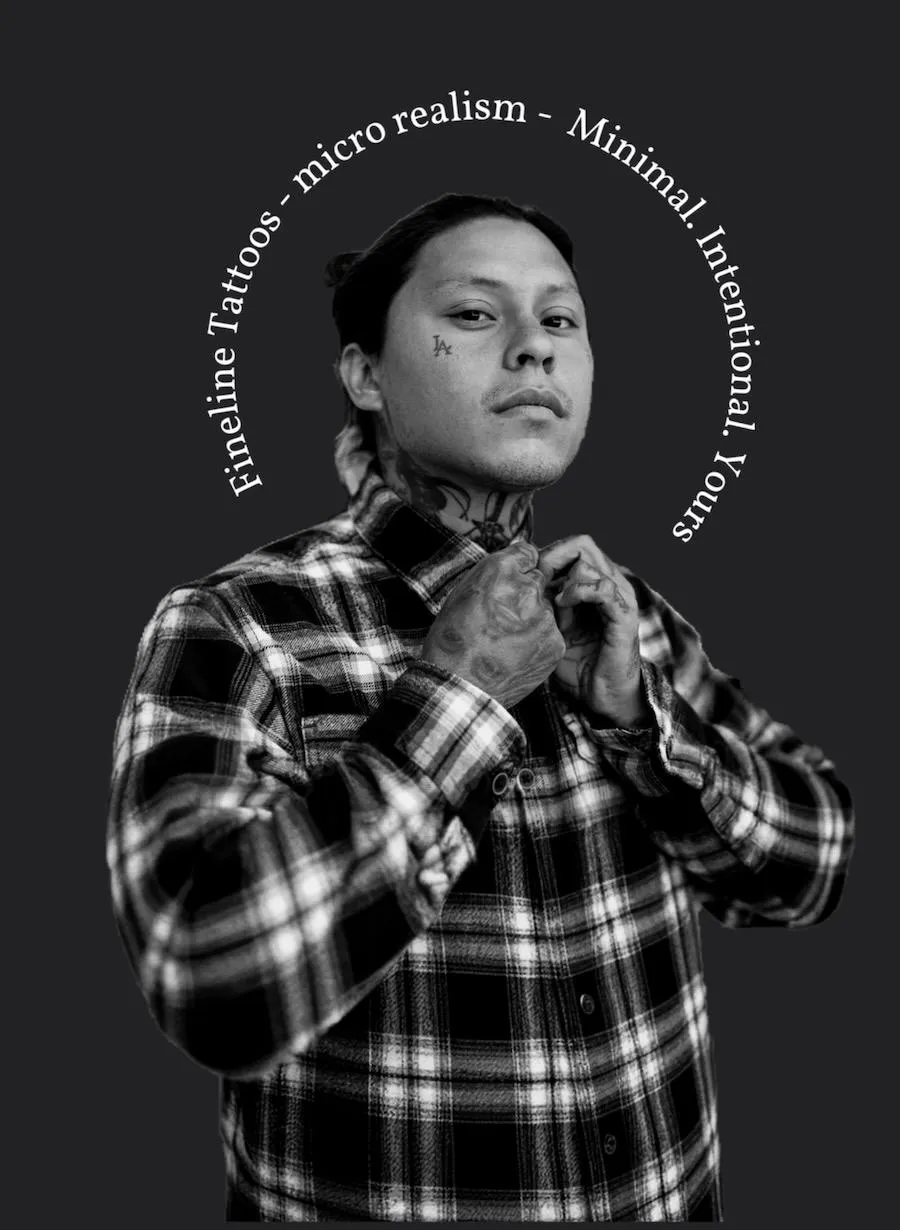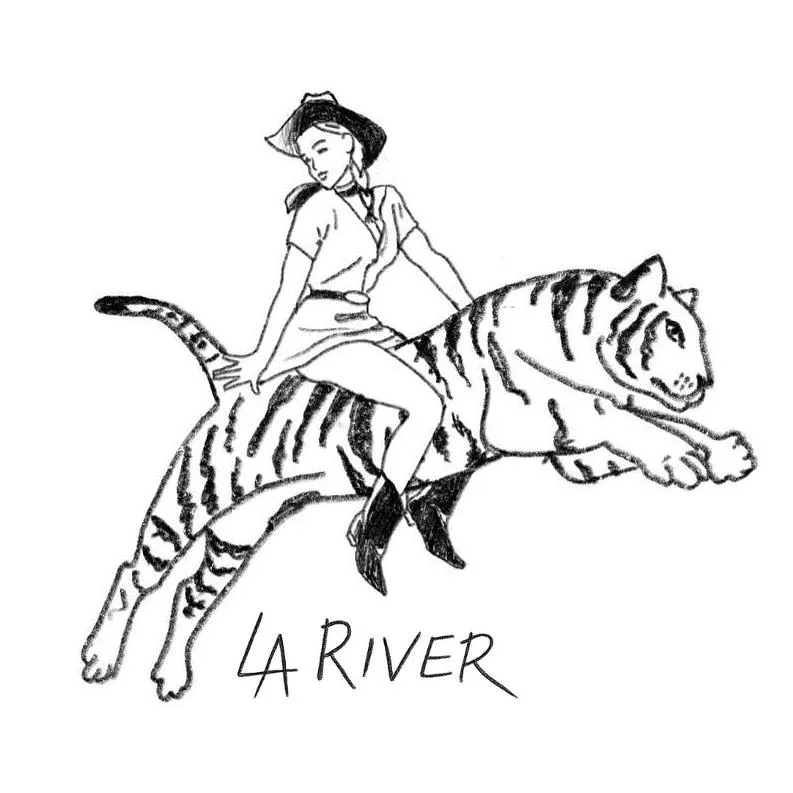Fine Line Tattoos: Fresh vs Healed — What to Expect, What to Love
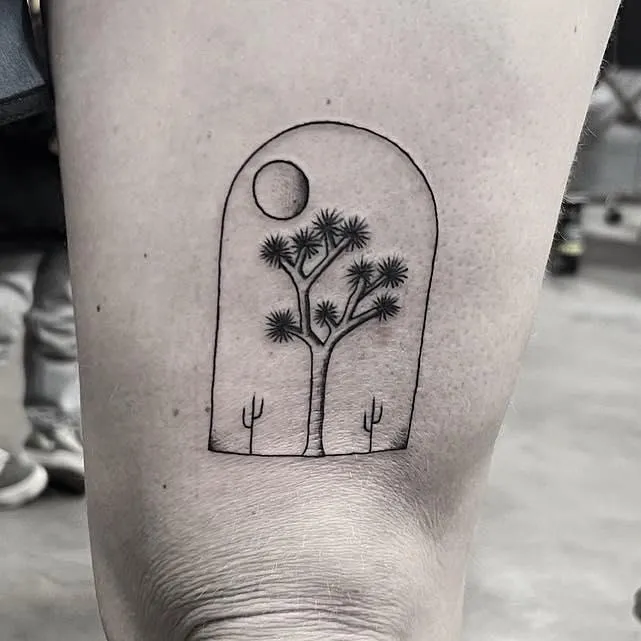
Fresh tattoos and healed tattoos never look the same. On the first day, your lines are sharp, bold, and almost too perfect. Weeks later, they soften into something more natural, like the tattoo was always meant to be there. That shift is where the real beauty of fine line work lives.
In this guide, I’ll tell you what fine line tattoos look like fresh and healed, how to know when yours is fully settled, and why placement and proper aftercare matter so much.
I’m Stephen Carballo, a state-licensed tattoo artist with more than 20 years of experience and over 7,000 tattoos completed worldwide. I specialize in fine line and micro-realism tattoos: subtle, precise pieces designed to age gracefully. If you want to understand how your tattoo will change over time, you’re in the right place.
Understanding Fine Line Tattoos
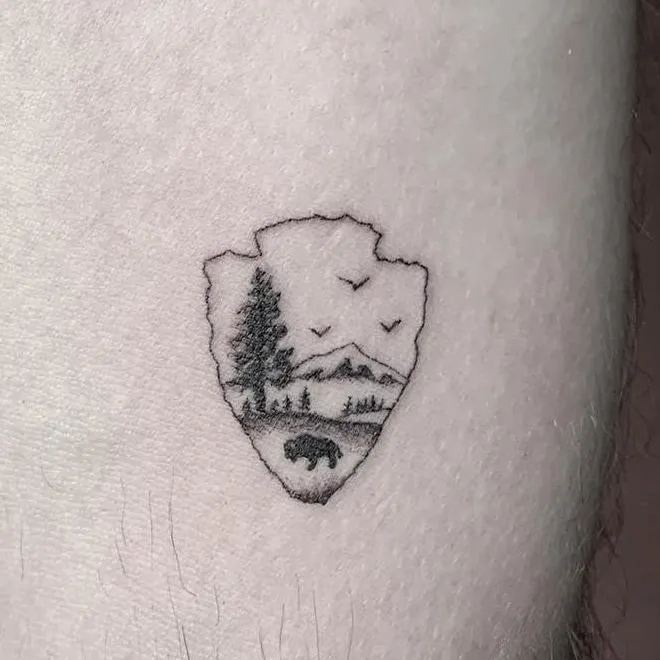
Fine line tattoos are built on precision. They use a single needle to create ultra-clean detail and subtle depth. Most are black and gray, kept minimalist in tone: botanical motifs, personal symbols, Western Americana, pet portraits, or travel-inspired designs.
They’re perfect for those who want subtle but meaningful marks. A tiny cactus. A palm tree to remember a trip. A name, a boot, a compass. Stripped down to the essentials, yet carrying lasting weight.
Most pieces take only 10 to 30 minutes of needle time. When done well, they settle into the skin naturally and age with grace.
Fresh vs Healed: What’s the Difference?
The way a fine line tattoo looks on day one isn’t how it will look for life. Fresh ink is bold, shiny, and almost glassy because the skin is reacting. There’s redness, slight swelling, and your body immediately begins the healing process.
The fresh look
A fresh tattoo often has a subtle shine or puffiness. The lines may look darker and even a bit thicker than they really are. This high contrast against your skin tone is temporary—it’s simply the way new ink and inflamed skin interact.
The healed look
Once healed, the tattoo softens. The surface looks matte instead of glossy, and the lines blend into your skin’s natural texture. Black ink lightens just enough to look like it belongs there. The boldness fades, but what remains feels cleaner and more natural.
The shift from fresh to healed is part of the magic. What first looks sharp and intense slowly transforms into something subtle, graceful, and lasting.
How Fine Line Tattoos Heal Over Time
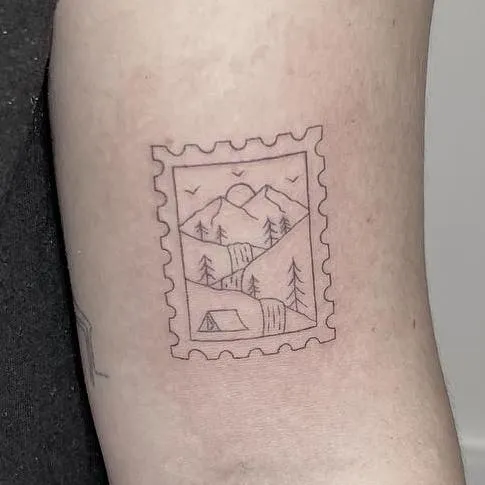
Healing is a process, and fine line tattoos go through a few clear stages before they settle into the skin. Here’s what to expect along the healing journey.
The first few days
Right after the session, your tattoo may feel warm, tight, or a little stingy. A bandage like Saniderm usually stays on during this stage, which protects the skin while the first repair work begins. Flaking hasn’t started yet, so the tattoo still looks bold and glossy.
The peeling stage
Around day four, the surface begins to peel or flake. This is completely normal. The key is to let your skin shed naturally and avoid picking. During this stage, the tattoo may look dull, cloudy, or even a little faded, but that’s only temporary.
Weeks two to four
By the second week, most of the flaking is finished. The tattoo starts to look closer to how it will appear long term. The surface feels smoother, and the texture of your skin returns to normal.
The fully healed stage
At six weeks, most fine-line tattoos are fully healed. The lines have softened, the saturation has settled, and the final look is clear. If any area fades more than expected, a touch-up session ensures the piece looks the way it should.
Healing may feel like a slow process, but every stage has its place. With the right care, your tattoo shifts from something new and raw into a mark that feels like it has always been part of you.
Why Your Fresh Tattoo Doesn’t Look Like the Final One
A fresh tattoo isn’t just ink. It’s a mix of pigment, blood, lymph, and inflammation. Your skin reacts right away, which is why the lines look darker, shinier, and sometimes even a little distorted. As the surface regenerates and the ink settles at the right depth, clarity begins to return.
This shift is especially noticeable with fine line work. Because the lines are so delicate, even minor swelling or scabbing can make them seem uneven at first. Once the healing is complete, those same lines soften and the precision shines through.
The way the tattoo is applied also matters. A gentle approach allows the skin to heal smoothly and reduces the risk of scarring or ink spreading. Density can always be added later with a touch-up, which is healthier for the tattoo than forcing too much ink into the skin on day one.
How Long Do Fine Line Tattoos Really Last?
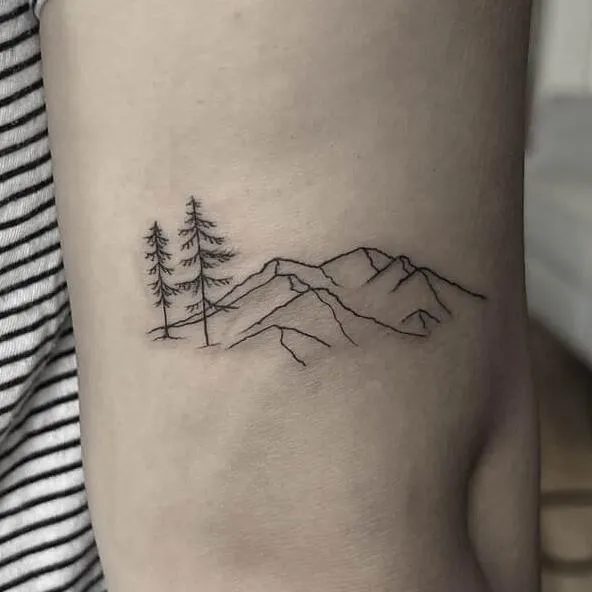
Fine line tattoos aren’t designed to stay bold forever. Their beauty is in the way they age — softening and fading gently over time, like a photograph or a page in a well-traveled journal.
Why the sun matters most
Nothing fades a tattoo faster than the sun. UV light breaks down pigment, so sunscreen or clothing is your best protection if you want your piece to last.
Why placement makes a difference
Some areas of the body simply wear faster. Ankles, fingers, and hands deal with constant rubbing and movement, so fading comes quicker. Upper arms, ribs, or shoulders usually hold detail longer.
How skin type plays a role
Oily skin or areas that move a lot can cause ink to break down sooner. That’s why two people with the same tattoo in different spots might see different results over the years.
Why aftercare sets the tone
The first days of healing matter more than most people realize. Picking, skipping moisturizer, or ignoring the aftercare plan can shorten the life of a tattoo by years. Taking care early on makes a lasting difference.
Compared to bold traditional tattoos, fine line work does fade faster. But it also heals quicker, feels gentler on the skin, and ages with a softer kind of beauty. And no matter where you place it, touch-ups are always an option to bring it back to life.
Aftercare for Fine Line Tattoos
A good tattoo begins at the needle, but it’s built in the days that follow. How you care for your skin in the first weeks has a direct impact on how clean and lasting the tattoo will look.
Keep the bandage on
A medical bandage like Saniderm protects the tattoo in its most vulnerable stage. It usually stays on for about seven days unless your artist gives other instructions. If it peels early, don’t panic — just switch to a gentle, fragrance-free moisturizer when the skin feels dry or itchy.
Protect your skin while it heals
For the first couple of weeks, avoid soaking in water, sweating heavily, or exposing the tattoo to direct sunlight. These things can pull ink out or irritate the skin. Loose, breathable clothing helps prevent rubbing that can slow healing.
Hands off during the peeling stage
Around week two, the tattoo enters its “ugly duckling” phase. The surface may peel, flake, or look foggy. This is temporary and completely normal. Don’t pick, scratch, or judge the tattoo too soon. The healed result will look much clearer.
Keep it hydrated long-term
Once healing is complete, treat the skin like you would your face. Clean, simple hydration goes a long way toward keeping the tattoo fresh. Products like Aquaphor, CeraVe, or Hustle Butter are excellent options.
Caring for your tattoo isn’t complicated, but consistency matters. A little attention during the early weeks makes a lasting difference in how your thin line tattoo looks for years to come.
Choosing the Right Artist for Fine Line Tattoos
Fine line tattoos demand precision. Every shake, overstroke, or hesitation is visible. That’s why choosing the right artists and tattoo studios for getting a fine line tattoo makes all the difference.
You want someone who specializes in this style, not just offers it on the side. Someone with a light hand so the process feels gentler and the healing phase goes smoothly. Someone who understands not only how to apply the tattoo, but how it will heal years from now.
The right fresh fine line tattoo artist should guide you through design choices, offer both custom sketches and curated flash, and be honest about what will and won’t last on your skin. A fine line tattoo isn’t just about day-one beauty. It’s about aging gracefully.
What Makes the LA River Tattoo Stand Out
I’ve shaped every part of my process to give you the best possible result. I work from a private loft studio on Abbot Kinney, by appointment only, so every session is focused and uninterrupted. Each booking is a calm two-hour block, which leaves plenty of time for sketching, tattooing, and clear aftercare guidance without ever feeling rushed.
Every tattoo I create comes with free lifetime touch-ups, because I believe your piece should look sharp for as long as you carry it. With over 20 years of experience and more than 7,000 tattoos completed worldwide, I bring precision, intention, and care to every single line.
If you’re ready for a tattoo that feels subtle, personal, and built to last, book your private session today.
Placement Matters: Best and Tougher Areas for Fine Line Tattoos

When it comes to fine line tattoos, placement on the body makes a big difference. Some areas naturally protect the lines and keep them sharp for years. The inner bicep, for example, is shielded from the sun's exposure and friction. The upper ribs also heal smoothly because there’s little skin movement, and even the outer forearm holds up well while keeping the tattoo visible.
Other spots fade faster. Fingers and hands are constantly exposed and in motion, so they lose detail quickly, though touch-ups can bring them back. Ankles and feet wear down sooner thanks to the sun, sand, and shoes. Even the back of the neck can soften with time from hairline friction and extra exposure.
In Venice Beach, tattoos carry another layer of meaning. The Skatepark, Ocean Front Walk, and Muscle Beach have become part of the city’s tattoo culture, so for many visitors, the design is also tied to the memory of place.
Fine Line Tattoos: Your Queries Answered
How do I know when my tattoo is fully healed?
A tattoo is healed when the skin looks matte, feels smooth, and no longer feels tight or flaky. For most people, healed fine line tattoos take about four to six weeks.
Do fresh tattoos look better than healed ones?
They simply look different. Fresh tattoos are bold and sharp. Healed tattoos are softer and more natural, which is the look that truly lasts.
Do fine line tattoos fade?
Yes, but that is part of their beauty. They are designed to age with you. With the right placement and good care, they will stay clean and graceful for years.
Can I get a touch-up later?
Absolutely. Every tattoo I create includes free lifetime touch-ups to keep it looking its best.
In the End, It Belongs
Fine line tattoos are about subtlety and intention. When fresh, they look bold and sharp because the layer of skin is still reacting. Once healed, they soften into something natural and permanent, a mark that feels like it was always meant to be there.
Placement, aftercare, and the artist’s skill all shape how long a fine line tattoo lasts. The right spot, the right care, and a steady hand ensure it stays clean and graceful for years.
That is the beauty of fine-line tattoos. They whisper rather than shout, and in time, they become part of your story.
🖋️ Ready to Make Your Fine Line Tattoo a Reality?
You’ve learned what makes these fine line tattoos age gracefully. Now it’s time to create one that belongs to you.
At LA River Tattoo in Venice Beach, I specialize in delicate fine line and micro-realism pieces designed to feel subtle, personal, and built to last. Each session is private, calm, and appointment-only, with free lifetime touch-ups included.
Explore the Portfolio
See healed work, flash, and custom designs for inspiration.
Book a Session
Reserve your private two-hour appointment in my Venice studio.
Let’s Talk Tattoos
Have an idea or a question? Start the conversation today.


